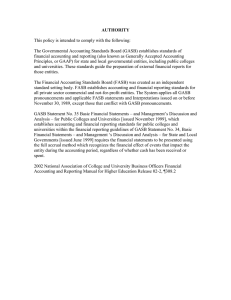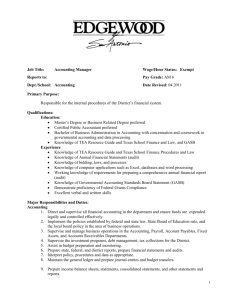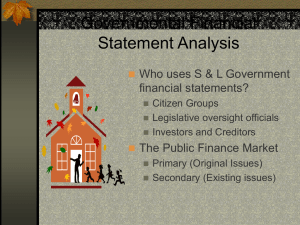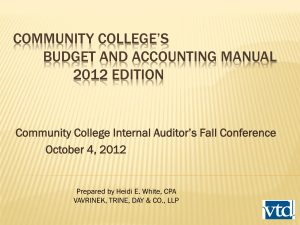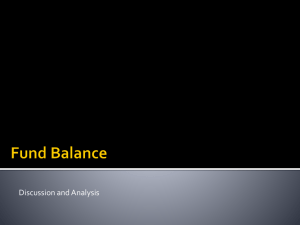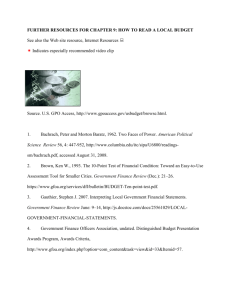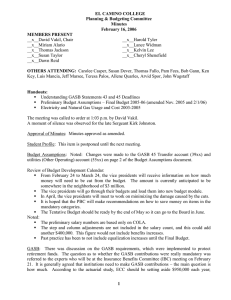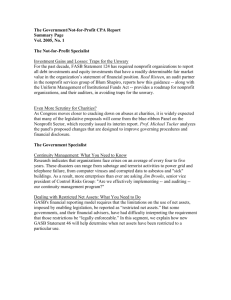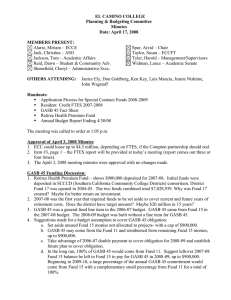New Guidance on Special Revenue and Capital Projects Funds
advertisement
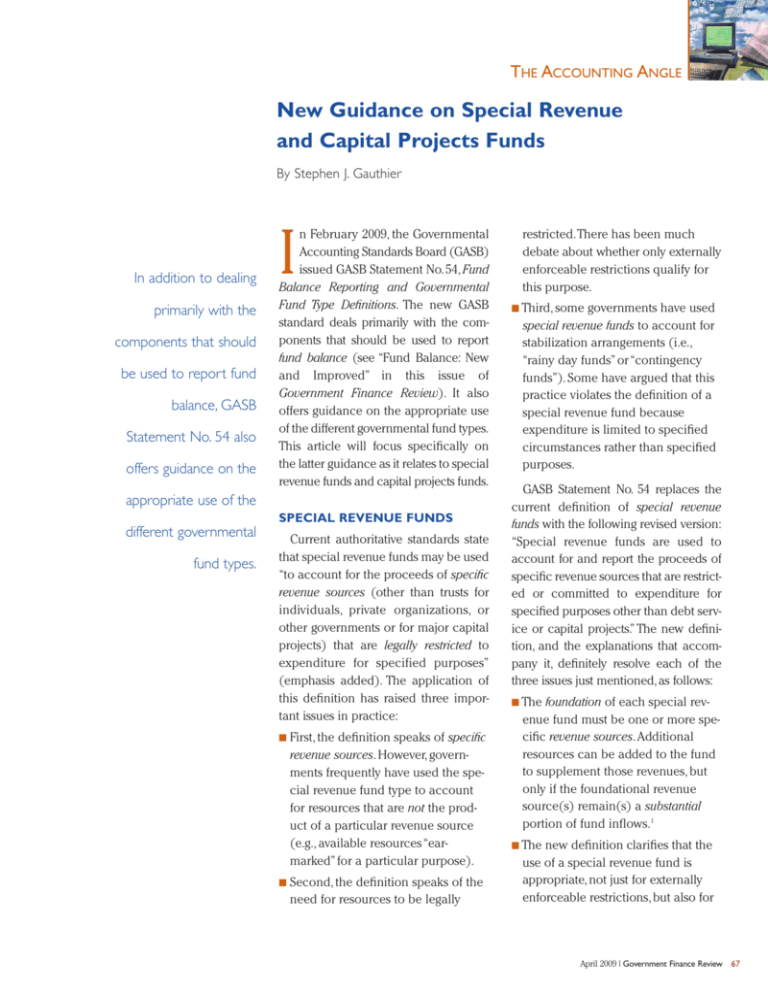
THE ACCOUNTING ANGLE New Guidance on Special Revenue and Capital Projects Funds By Stephen J. Gauthier In addition to dealing primarily with the components that should be used to report fund balance, GASB Statement No. 54 also offers guidance on the n February 2009, the Governmental Accounting Standards Board (GASB) issued GASB Statement No. 54, Fund Balance Reporting and Governmental Fund Type Definitions. The new GASB standard deals primarily with the components that should be used to report fund balance (see “Fund Balance: New and Improved” in this issue of Government Finance Review). It also offers guidance on the appropriate use of the different governmental fund types. This article will focus specifically on the latter guidance as it relates to special revenue funds and capital projects funds. I appropriate use of the SPECIAL REVENUE FUNDS different governmental fund types. Current authoritative standards state that special revenue funds may be used “to account for the proceeds of specific revenue sources (other than trusts for individuals, private organizations, or other governments or for major capital projects) that are legally restricted to expenditure for specified purposes” (emphasis added). The application of this definition has raised three important issues in practice: ■ ■ First, the definition speaks of specific revenue sources. However, governments frequently have used the special revenue fund type to account for resources that are not the product of a particular revenue source (e.g., available resources “earmarked” for a particular purpose). Second, the definition speaks of the need for resources to be legally restricted.There has been much debate about whether only externally enforceable restrictions qualify for this purpose. ■ Third, some governments have used special revenue funds to account for stabilization arrangements (i.e., “rainy day funds” or “contingency funds”). Some have argued that this practice violates the definition of a special revenue fund because expenditure is limited to specified circumstances rather than specified purposes. GASB Statement No. 54 replaces the current definition of special revenue funds with the following revised version: “Special revenue funds are used to account for and report the proceeds of specific revenue sources that are restricted or committed to expenditure for specified purposes other than debt service or capital projects.” The new definition, and the explanations that accompany it, definitely resolve each of the three issues just mentioned, as follows: ■ The foundation of each special revenue fund must be one or more specific revenue sources. Additional resources can be added to the fund to supplement those revenues, but only if the foundational revenue source(s) remain(s) a substantial portion of fund inflows.1 ■ The new definition clarifies that the use of a special revenue fund is appropriate, not just for externally enforceable restrictions, but also for April 2009 | Government Finance Review 67 certain self-imposed limitations (i.e., committed resources = limitations imposed by the highest level of decision making of the government, typically the governing body, that remain in force unless removed in essentially the same manner). ■A stabilization arrangement does, in fact, meet the test of being limited to a specific purpose (i.e., circumstances = purpose). Nonetheless, stabilization arrangements probably most often will not qualify for reporting in special revenue funds for other reasons (e.g., lack of a specified revenue source). CAPITAL PROJECTS FUNDS Current authoritative standards state that capital projects funds are properly used “to account for financial resources to be used for the acquisition or construction of major capital facilities (other than those financed by proprietary funds or in trust funds for individuals, private organizations, or other governments).”While that definition speaks specifically of the “acquisition or construction of major facilities” (emphasis added), in practice, governments commonly have used capital projects funds for the acquisition of capital assets other than facilities (e.g., fire trucks). During the due process leading to GASB Statement No. 54, some suggested that the use of capital projects funds needed to be “tightened up” to exclude the acquisition of capital assets not associated with a facility. Instead, GASB Statement No. 54 replaces the current definition with a new one that will expressly permit the broader use of the fund type now found in practice: “Capital projects funds are used to account for and report financial resources that are restricted, committed, or assigned to expenditure for capital outlays including the acquisition or construction of capital facilities and other capital assets.” EFFECTIVE DATE Governments will be required to implement GASB Statement No.54 starting with the fiscal period that ends June 30, 2011. Earlier application is encouraged.❙ Note 1. Or a substantial portion of fund balance, in the case of revolving loan programs. STEPHEN J. GAUTHIER is director of the GFOA’s Technical Services Center in Chicago, Illinois. Established Reputation. New Name. Revenue Generation ■ ■ ■ ■ ■ Utility Rate Studies User Fee (Cost of Service) Studies Cost Allocation Plans Development (Impact) Fee Studies Special District Formation and Administration Strategic Financial Planning ■ ■ ■ Fiscal Impact Analysis Facility Financing Plans Annexation and Incorporation Studies Compliance Services ■ ■ ■ ■ Arbitrage Rebate Escrow Monitoring Escrow Verification Continuing Disclosure Management Consulting ■ ■ ■ ■ ■ Organizational Assessments and Studies Staffing and Outsourcing for New and Existing Cities Management Training and Development Administrative Investigations Background Investigations MuniFinancial has become Willdan Financial Services and is ready to fulfill your financial and economic consulting needs. California: Temecula, Lancaster, Oakland, Sacramento; Arizona: Phoenix; Florida: Orlando; Tennessee: Memphis 800.755.6864 | www.willdan.com 68 Government Finance Review | April 2009
